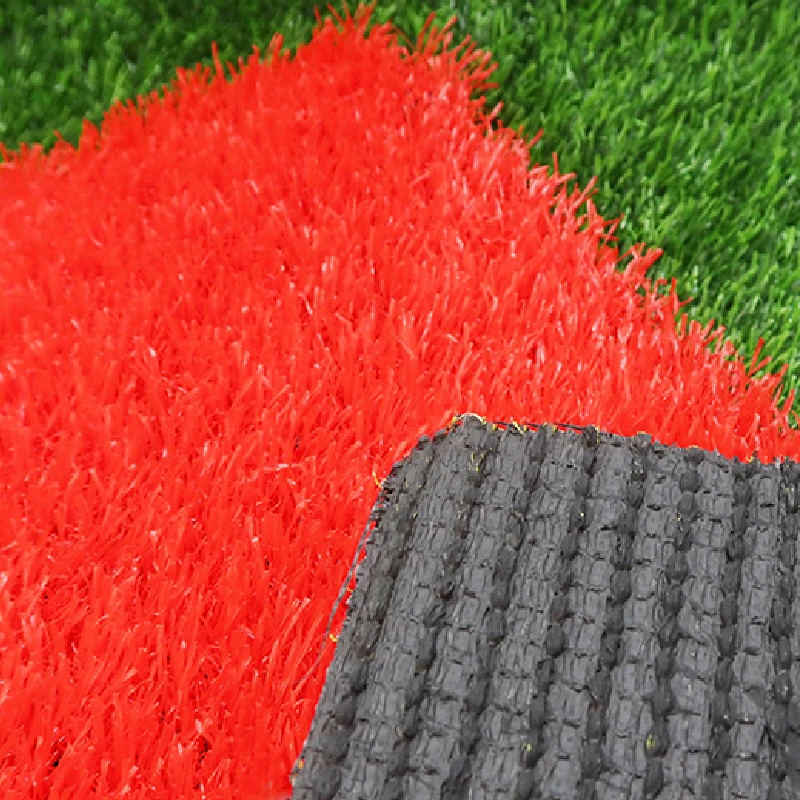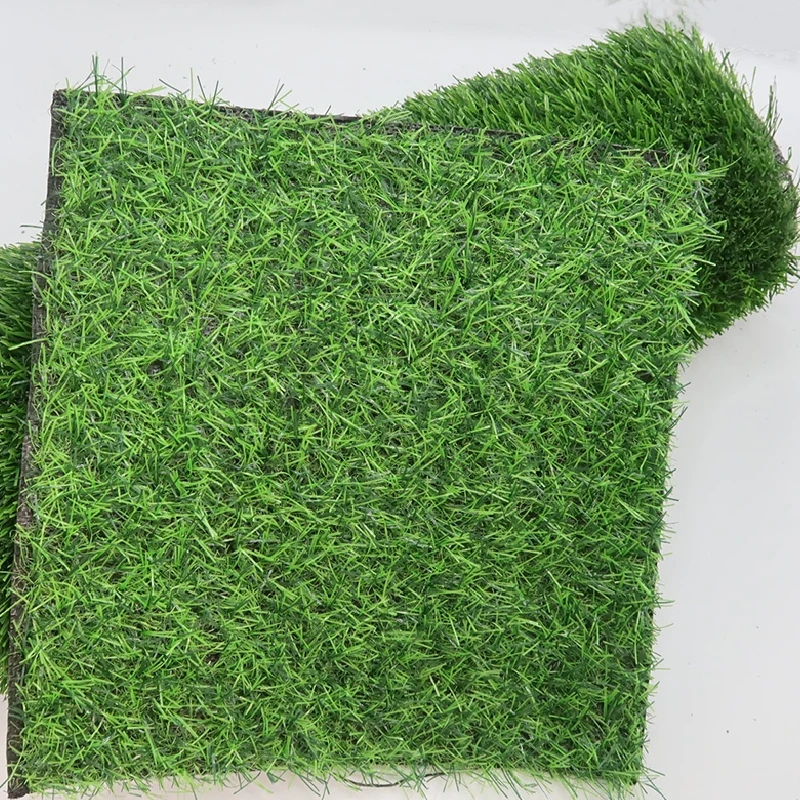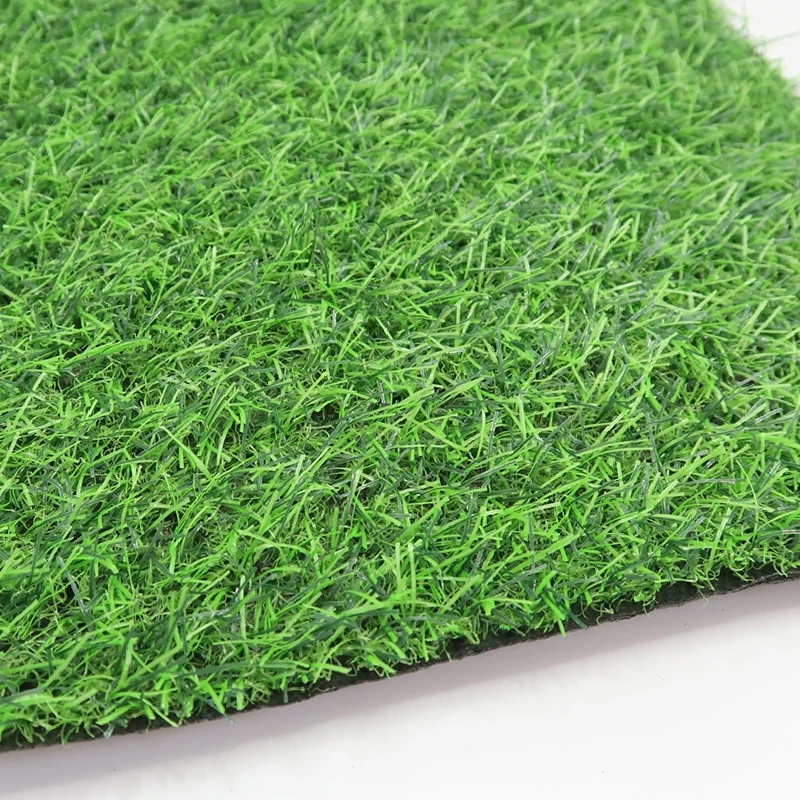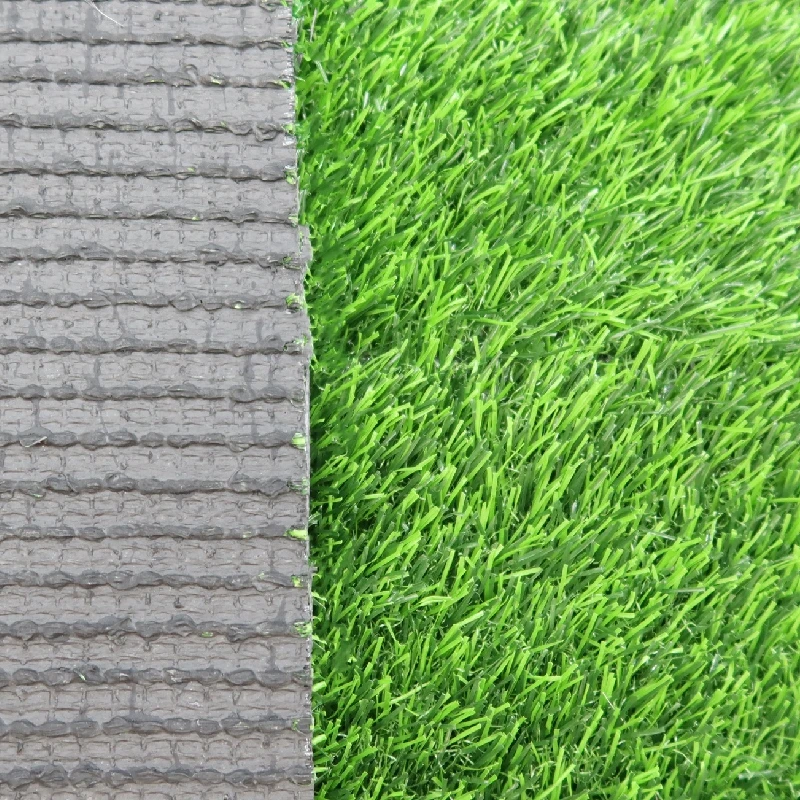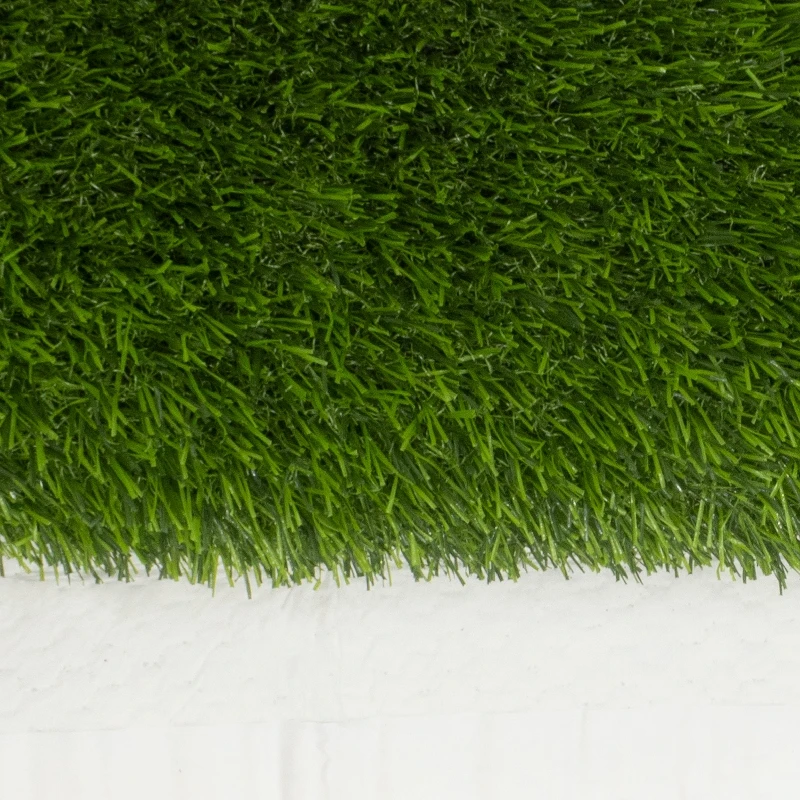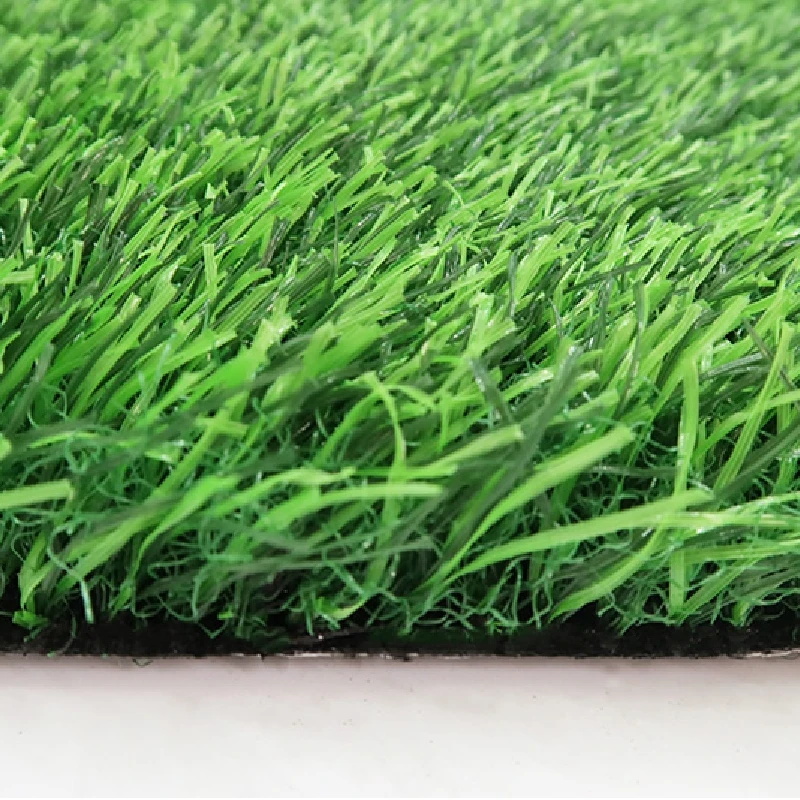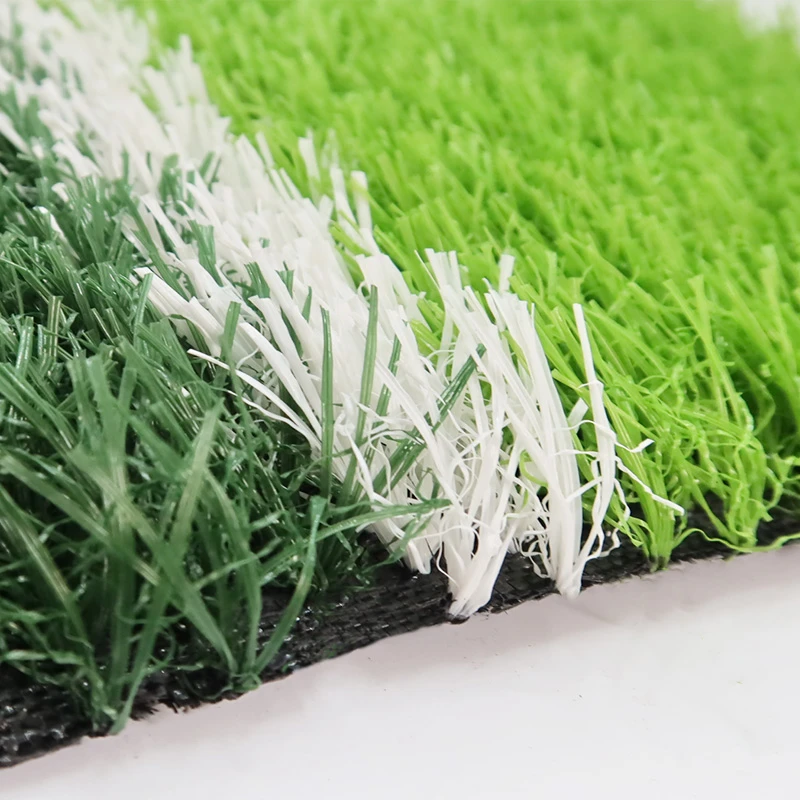Pet-Friendly Artificial Grass: Safe & Durable for Animal Companions
Aug . 11, 2025 12:40 Back to list
Understanding the Evolution of Pet-Centric Landscaping Solutions
The demand for resilient, low-maintenance, and hygienic outdoor spaces has driven significant innovation in the artificial grass sector. Particularly, the market for animal friendly artificial grass has witnessed exponential growth, responding to the evolving needs of pet owners, commercial kennels, and public dog parks. This specialized turf is engineered not just for aesthetics but for superior performance under the unique stresses imposed by pets, including heavy traffic, waste management, and odor control. Unlike conventional landscaping, pet-specific artificial grass mitigates common issues such as muddy paws, pest infestations, allergies from natural grass, and the constant need for irrigation and chemical treatments.
The trend toward urban living and smaller yards has amplified the necessity for durable and practical green solutions. Pet owners are increasingly seeking alternatives that offer cleanliness and safety without compromising on the look and feel of a natural lawn. This includes features like enhanced drainage, antimicrobial properties, and robust construction to withstand digging and vigorous play. The industry is continuously advancing, introducing new infill materials, backing technologies, and fiber compositions that cater specifically to the challenges of pet ownership, ensuring a cleaner, safer, and more enjoyable environment for both pets and their owners. These innovations position animal friendly artificial grass as a premium solution in modern pet care infrastructure.
The Manufacturing Process of Advanced Pet-Friendly Turf
The production of high-quality animal friendly artificial grass involves a sophisticated multi-stage process, ensuring durability, safety, and optimal performance. This technical journey begins with the selection of premium raw materials, typically high-grade polyethylene (PE) or polypropylene (PP) polymers, chosen for their resilience, UV stability, and non-toxicity. These polymers are melted and extruded into individual fibers, often shaped (e.g., C-shape, S-shape, or diamond) to enhance durability, resilience, and natural appearance. The denier, or linear mass density of the fiber, is meticulously controlled to achieve desired softness and strength characteristics. For instance, higher denier fibers offer greater durability suitable for high-traffic pet areas.
Following fiber extrusion, the strands are twisted and bundled into robust yarn spools. This yarn then proceeds to the tufting stage, where automated machinery intricately stitches the fibers into a durable primary backing, typically made of woven polypropylene or polyester. The tufting gauge and stitch rate are critical parameters that determine the turf’s density and pile height, directly influencing its aesthetic and functional properties. Post-tufting, the reverse side of the primary backing is coated with a robust adhesive, usually a high-performance polyurethane or latex, to securely anchor the fibers. This coating also plays a pivotal role in ensuring structural integrity and often incorporates advanced drainage mechanisms and antimicrobial agents. Small, uniform drainage holes are then strategically perforated through the backing, facilitating rapid liquid permeability crucial for effective pet waste management. Finally, the grass undergoes a curing process, thorough quality control checks – including pile pull strength, UV degradation resistance, and drainage rate verification – and is then rolled and prepared for shipment. Adherence to standards like ISO 9001 for quality management and rigorous internal testing protocols ensures that each roll of pet friendly grass meets stringent performance criteria for the most demanding applications.
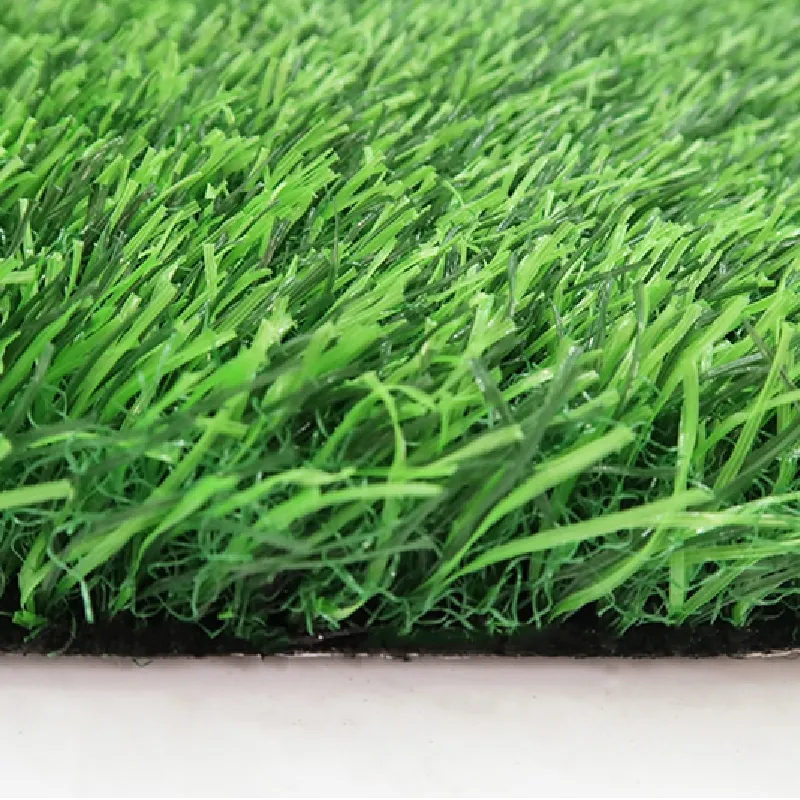
Key Technical Specifications and Performance Metrics
When evaluating what is pet friendly artificial grass, understanding its technical parameters is crucial for B2B procurement decisions. These specifications directly impact the product's durability, hygiene, and long-term performance in pet-centric environments. Key metrics include pile height, face weight, total weight, backing material composition, tuft gauge, stitch rate, and most critically, permeability and drainage rates. For instance, a higher face weight indicates more yarn per square foot, contributing to greater density and resilience against compaction from pet traffic. Permeability, measured in inches per hour, dictates how quickly liquids drain through the turf, a vital feature for urine and cleaning solutions.
Our Artificial Grass For Pet Training product exemplifies these superior specifications, designed for maximum functionality and longevity. The backing system often incorporates advanced Urethane or SBR Latex with integrated antimicrobial agents, preventing bacterial growth and neutralizing odors. Infill choice is also critical; for pet applications, non-toxic, non-absorbent infills like silica sand or specialized zeolite granules (which absorb ammonia) are preferred over crumb rubber. UV stabilization additives are integrated into the yarn during extrusion, ensuring color fastness and structural integrity even under prolonged sun exposure, verified by accelerated weathering tests according to ASTM G154 standards. The table below outlines typical and optimal parameters for high-performance pet turf:
| Parameter | Typical Range (Standard Turf) | Optimal Range (Pet-Friendly Turf) | Significance for Pet Use |
|---|---|---|---|
| Pile Height | 30-50 mm (1.2-2.0 in) | 25-40 mm (1.0-1.6 in) | Shorter pile facilitates easier cleaning and better drainage of pet waste. |
| Face Weight | 40-60 oz/sq yd | 60-80+ oz/sq yd | Higher density for increased durability against pet traffic and digging. |
| Drainage Rate | 30-60 in/hr | 100-200+ in/hr | Rapid and efficient drainage prevents odor buildup and standing liquids. |
| Backing Material | SBR Latex / Polyurethane | Polyurethane with enhanced drainage & antimicrobial additives | Superior strength, less absorption, and odor resistance. |
| Yarn Material | PE/PP | High-grade PE with UV stabilization | Non-toxic, durable, and resistant to fading, scratching, and wear from pet claws. |
| Life Expectancy | 8-10 years | 10-15+ years | Longer lifespan ensures a better return on investment for commercial applications. |
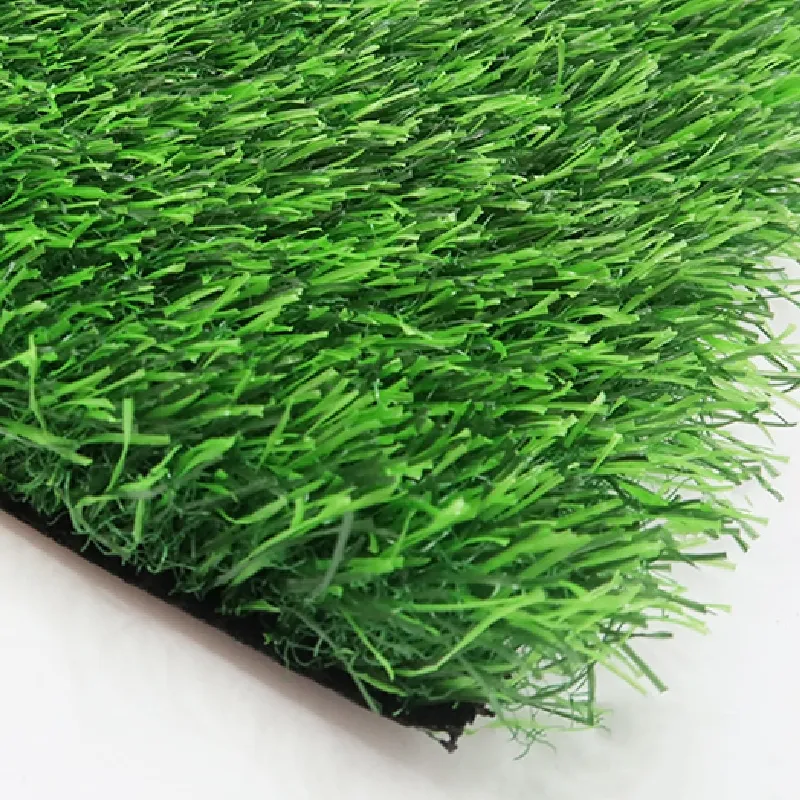
Application Scenarios and Strategic Advantages
The versatility of animal friendly artificial grass extends across a myriad of applications, demonstrating its adaptability and superior performance in diverse environments. For residential clients, it transforms muddy backyards into pristine, usable spaces for pets and families, eliminating concerns about lawn damage, pesticides, and constant maintenance. Pet boarding facilities, doggy daycares, and veterinary clinics benefit immensely from the hygienic and easy-to-clean properties, ensuring a sanitary environment for multiple animals. The robust construction and excellent drainage make it an ideal choice for high-traffic areas, reducing operational costs associated with cleaning and maintenance.
In commercial settings, such as public dog parks, apartment complex pet areas, and even animal shelters, the implementation of our Artificial Grass For Pet Training results in significant long-term savings. Natural grass in these settings quickly degrades, leading to barren, muddy, and unsanitary conditions. Artificial grass provides a durable, consistently green surface that withstands intensive use. Its anti-microbial features and advanced drainage systems are paramount in preventing odor accumulation and bacterial growth, crucial for public health and animal welfare. Furthermore, the absence of allergens found in natural grass makes it a safer option for pets and individuals with sensitivities. This strategic advantage positions pet-friendly artificial turf as a sustainable and cost-effective investment for any organization prioritizing pet well-being and facility cleanliness.
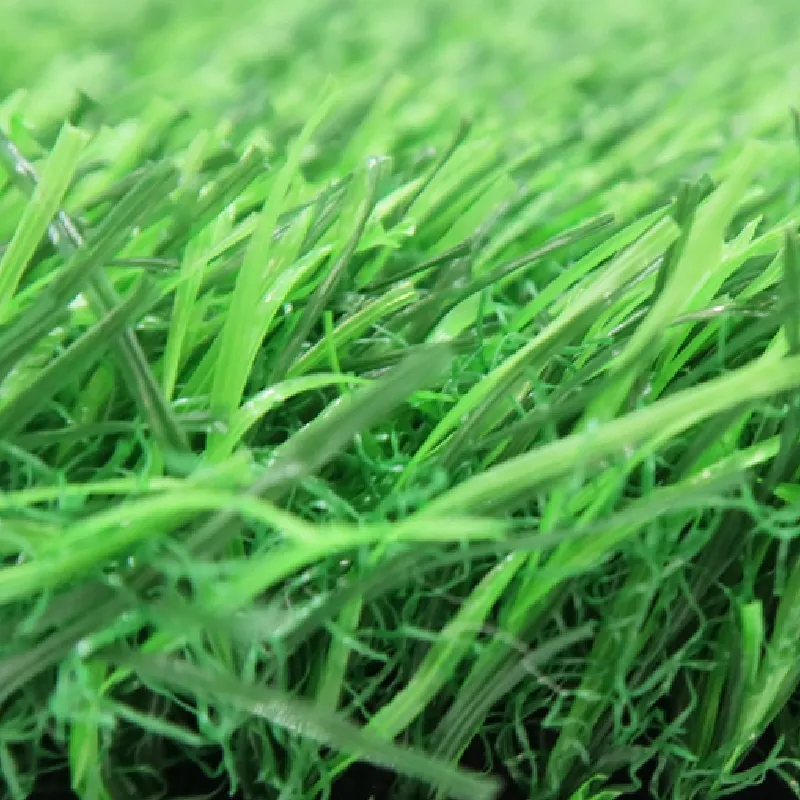
Tailored Solutions and Customization Capabilities
Recognizing that each B2B client has unique operational requirements, our approach to providing animal friendly artificial grass solutions is deeply rooted in customization. We offer bespoke design and manufacturing services to meet specific project needs, whether it's for a small-scale veterinary clinic rehabilitation area or a large-scale municipal dog park. Our capabilities extend beyond standard product offerings to include variations in pile height, density (face weight), yarn color blends for specific aesthetic requirements, and specialized backing systems engineered for extreme drainage or unique sub-base conditions.
For instance, a client requiring an indoor pet training facility might benefit from a shorter pile, high-density turf that offers superior traction and extremely rapid drainage, optimized for indoor cleaning protocols. Conversely, an outdoor dog park might necessitate a higher pile for softer impact absorption, coupled with maximum UV protection and robust tear resistance to withstand aggressive play. Our technical team works collaboratively with clients, utilizing CAD software and material science expertise to develop precise product specifications. We can adjust fiber composition, tufting patterns, and infill recommendations to achieve desired outcomes in terms of durability, comfort, aesthetics, and hygiene. This client-centric model ensures that every Artificial Grass For Pet Training solution is perfectly aligned with the project's functional demands and budgetary constraints, delivering optimal value and performance.
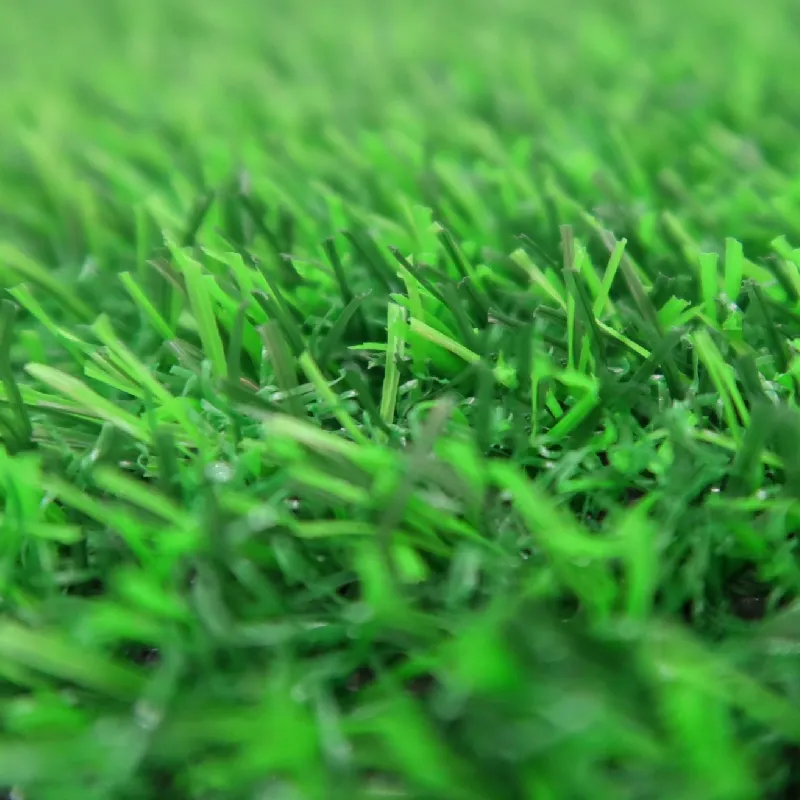
Case Studies and Client Testimonials
Our extensive experience in deploying pet friendly grass solutions is underscored by numerous successful installations and positive client feedback. A notable case involved a large commercial dog boarding facility that was struggling with perpetually muddy conditions and persistent odor issues due to high pet traffic on natural grass. By installing our Artificial Grass For Pet Training, the facility transformed its outdoor play areas. The enhanced drainage system drastically improved liquid waste management, and the integrated antimicrobial properties virtually eliminated unpleasant odors. The facility reported a 60% reduction in daily cleaning time and a significant increase in client satisfaction, leading to higher occupancy rates.
Another compelling example comes from a municipal park department seeking a durable, low-maintenance solution for a new public dog park. Traditional landscaping proved unsustainable given the intense usage. Our customized animal friendly artificial grass, specifically engineered with a robust backing and high stitch rate, was installed. Post-installation, the park reported zero mud issues, even after heavy rainfall, and a considerable reduction in maintenance costs compared to their natural grass sections. Pet owners appreciated the clean environment and the consistent availability of the park regardless of weather conditions. These real-world applications demonstrate the tangible benefits and return on investment achieved through our specialized artificial turf solutions, proving their efficacy and reliability in demanding pet environments.
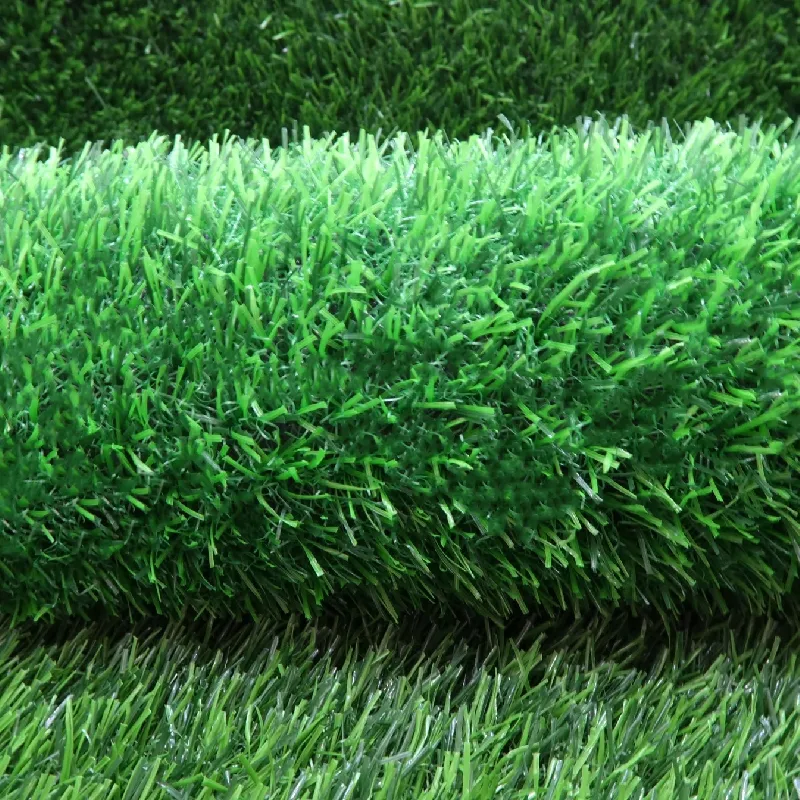
Quality Assurance, Warranty, and Support
Our commitment to quality is foundational to our operations, ensuring every roll of animal friendly artificial grass meets the highest industry benchmarks. We operate under stringent ISO 9001:2015 certified quality management systems, encompassing every stage from raw material procurement to final product inspection. All products undergo comprehensive internal laboratory testing for UV resistance (using accelerated weathering chambers), pile pull strength, tear resistance, and drainage efficacy. Furthermore, our products adhere to relevant ASTM (American Society for Testing and Materials) standards for artificial turf, ensuring safety, durability, and environmental compliance. Our materials are verified as non-toxic and heavy-metal-free, making them unequivocally safe for pets and children.
We stand behind the quality and longevity of our Artificial Grass For Pet Training with a robust warranty program, typically ranging from 8 to 15 years depending on the product series and application. This warranty covers manufacturing defects, excessive UV degradation, and fiber detachment under normal usage conditions. Our typical delivery cycle for standard orders is 2-4 weeks post-confirmation, with expedited options available for urgent projects. Post-sales support is a cornerstone of our service commitment; our dedicated technical support team is available for installation guidance, maintenance advice, and addressing any performance inquiries, ensuring optimal product lifespan and client satisfaction. We provide detailed installation guides and offer training sessions for larger commercial clients, reinforcing our partnership approach.
Frequently Asked Questions (FAQs)
-
Q: How do I clean animal friendly artificial grass from pet waste?
A: Solid waste should be removed as with natural grass. For liquid waste, our turf's advanced drainage system allows urine to pass through quickly. A simple rinse with water, followed by an enzymatic cleaner (specifically formulated for pet turf) if odors persist, is typically sufficient. The antimicrobial backing helps prevent bacterial growth that causes odors.
-
Q: Is your pet friendly grass safe for all types of pets?
A: Yes, our Artificial Grass For Pet Training is manufactured using non-toxic, lead-free materials, making it safe for all pets, including dogs, cats, and even small animals. We ensure compliance with strict environmental and health safety standards.
-
Q: What is the typical lifespan of your pet-friendly artificial turf?
A: Designed for durability, our pet-specific turf generally has a life expectancy of 10-15 years, depending on traffic volume and maintenance. Our robust construction and UV stability ensure long-term performance even in demanding environments.
-
Q: Does what is pet friendly artificial grass require infill?
A: While some of our products can be installed with minimal infill, for optimal performance in pet applications, we recommend specialized non-toxic infills like silica sand or zeolite granules. Zeolite, in particular, helps with odor absorption and ensures the fibers remain upright, enhancing durability and aesthetic appeal.
References and Academic Insights
- American Society for Testing and Materials (ASTM) Standards for Artificial Turf Systems.
- International Organization for Standardization (ISO) 9001: Quality Management Systems – Requirements.
- US Green Building Council (USGBC) LEED certification criteria regarding sustainable landscaping materials.
- Research on the Environmental Impact of Artificial Turf in Urban and Peri-Urban Landscapes, published in Environmental Science & Technology.
- Study on Microbial Growth and Odor Mitigation in Synthetic Turf Systems for Pet Applications, a peer-reviewed article on advanced backing technologies.
Understanding the Evolution of Pet-Centric Landscaping Solutions
The demand for resilient, low-maintenance, and hygienic outdoor spaces has driven significant innovation in the artificial grass sector. Particularly, the market for animal friendly artificial grass has witnessed exponential growth, responding to the evolving needs of pet owners, commercial kennels, and public dog parks. This specialized turf is engineered not just for aesthetics but for superior performance under the unique stresses imposed by pets, including heavy traffic, waste management, and odor control. Unlike conventional landscaping, pet-specific artificial grass mitigates common issues such as muddy paws, pest infestations, allergies from natural grass, and the constant need for irrigation and chemical treatments.
The trend toward urban living and smaller yards has amplified the necessity for durable and practical green solutions. Pet owners are increasingly seeking alternatives that offer cleanliness and safety without compromising on the look and feel of a natural lawn. This includes features like enhanced drainage, antimicrobial properties, and robust construction to withstand digging and vigorous play. The industry is continuously advancing, introducing new infill materials, backing technologies, and fiber compositions that cater specifically to the challenges of pet ownership, ensuring a cleaner, safer, and more enjoyable environment for both pets and their owners. These innovations position animal friendly artificial grass as a premium solution in modern pet care infrastructure, reflecting a pivotal industry trend.
The Manufacturing Process of Advanced Pet-Friendly Turf
The production of high-quality animal friendly artificial grass involves a sophisticated multi-stage process, ensuring durability, safety, and optimal performance. This technical journey begins with the selection of premium raw materials, typically high-grade polyethylene (PE) or polypropylene (PP) polymers, chosen for their resilience, UV stability, and non-toxicity. These polymers are melted and extruded into individual fibers, often shaped (e.g., C-shape, S-shape, or diamond) to enhance durability, resilience, and natural appearance. The denier, or linear mass density of the fiber, is meticulously controlled to achieve desired softness and strength characteristics. For instance, higher denier fibers offer greater durability suitable for high-traffic pet areas.
Following fiber extrusion, the strands are twisted and bundled into robust yarn spools. This yarn then proceeds to the tufting stage, where automated machinery intricately stitches the fibers into a durable primary backing, typically made of woven polypropylene or polyester. The tufting gauge and stitch rate are critical parameters that determine the turf’s density and pile height, directly influencing its aesthetic and functional properties. Post-tufting, the reverse side of the primary backing is coated with a robust adhesive, usually a high-performance polyurethane or latex, to securely anchor the fibers. This coating also plays a pivotal role in ensuring structural integrity and often incorporates advanced drainage mechanisms and antimicrobial agents. Small, uniform drainage holes are then strategically perforated through the backing, facilitating rapid liquid permeability crucial for effective pet waste management. Finally, the grass undergoes a curing process, thorough quality control checks – including pile pull strength, UV degradation resistance, and drainage rate verification – and is then rolled and prepared for shipment. Adherence to standards like ISO 9001 for quality management and rigorous internal testing protocols ensures that each roll of pet friendly grass meets stringent performance criteria for the most demanding applications.

Key Technical Specifications and Performance Metrics
When evaluating what is pet friendly artificial grass, understanding its technical parameters is crucial for B2B procurement decisions. These specifications directly impact the product's durability, hygiene, and long-term performance in pet-centric environments. Key metrics include pile height, face weight, total weight, backing material composition, tuft gauge, stitch rate, and most critically, permeability and drainage rates. For instance, a higher face weight indicates more yarn per square foot, contributing to greater density and resilience against compaction from pet traffic. Permeability, measured in inches per hour, dictates how quickly liquids drain through the turf, a vital feature for urine and cleaning solutions.
Our Artificial Grass For Pet Training product exemplifies these superior specifications, designed for maximum functionality and longevity. The backing system often incorporates advanced Urethane or SBR Latex with integrated antimicrobial agents, preventing bacterial growth and neutralizing odors. Infill choice is also critical; for pet applications, non-toxic, non-absorbent infills like silica sand or specialized zeolite granules (which absorb ammonia) are preferred over crumb rubber. UV stabilization additives are integrated into the yarn during extrusion, ensuring color fastness and structural integrity even under prolonged sun exposure, verified by accelerated weathering tests according to ASTM G154 standards. The table below outlines typical and optimal parameters for high-performance pet turf:
| Parameter | Typical Range (Standard Turf) | Optimal Range (Pet-Friendly Turf) | Significance for Pet Use |
|---|---|---|---|
| Pile Height | 30-50 mm (1.2-2.0 in) | 25-40 mm (1.0-1.6 in) | Shorter pile facilitates easier cleaning and better drainage of pet waste. |
| Face Weight | 40-60 oz/sq yd | 60-80+ oz/sq yd | Higher density for increased durability against pet traffic and digging. |
| Drainage Rate | 30-60 in/hr | 100-200+ in/hr | Rapid and efficient drainage prevents odor buildup and standing liquids. |
| Backing Material | SBR Latex / Polyurethane | Polyurethane with enhanced drainage & antimicrobial additives | Superior strength, less absorption, and odor resistance. |
| Yarn Material | PE/PP | High-grade PE with UV stabilization | Non-toxic, durable, and resistant to fading, scratching, and wear from pet claws. |
| Life Expectancy | 8-10 years | 10-15+ years | Longer lifespan ensures a better return on investment for commercial applications. |

Application Scenarios and Strategic Advantages
The versatility of animal friendly artificial grass extends across a myriad of applications, demonstrating its adaptability and superior performance in diverse environments. For residential clients, it transforms muddy backyards into pristine, usable spaces for pets and families, eliminating concerns about lawn damage, pesticides, and constant maintenance. Pet boarding facilities, doggy daycares, and veterinary clinics benefit immensely from the hygienic and easy-to-clean properties, ensuring a sanitary environment for multiple animals. The robust construction and excellent drainage make it an ideal choice for high-traffic areas, reducing operational costs associated with cleaning and maintenance.
In commercial settings, such as public dog parks, apartment complex pet areas, and even animal shelters, the implementation of our Artificial Grass For Pet Training results in significant long-term savings. Natural grass in these settings quickly degrades, leading to barren, muddy, and unsanitary conditions. Artificial grass provides a durable, consistently green surface that withstands intensive use. Its anti-microbial features and advanced drainage systems are paramount in preventing odor accumulation and bacterial growth, crucial for public health and animal welfare. Furthermore, the absence of allergens found in natural grass makes it a safer option for pets and individuals with sensitivities. This strategic advantage positions pet-friendly artificial turf as a sustainable and cost-effective investment for any organization prioritizing pet well-being and facility cleanliness.

Tailored Solutions and Customization Capabilities
Recognizing that each B2B client has unique operational requirements, our approach to providing animal friendly artificial grass solutions is deeply rooted in customization. We offer bespoke design and manufacturing services to meet specific project needs, whether it's for a small-scale veterinary clinic rehabilitation area or a large-scale municipal dog park. Our capabilities extend beyond standard product offerings to include variations in pile height, density (face weight), yarn color blends for specific aesthetic requirements, and specialized backing systems engineered for extreme drainage or unique sub-base conditions.
For instance, a client requiring an indoor pet training facility might benefit from a shorter pile, high-density turf that offers superior traction and extremely rapid drainage, optimized for indoor cleaning protocols. Conversely, an outdoor dog park might necessitate a higher pile for softer impact absorption, coupled with maximum UV protection and robust tear resistance to withstand aggressive play. Our technical team works collaboratively with clients, utilizing CAD software and material science expertise to develop precise product specifications. We can adjust fiber composition, tufting patterns, and infill recommendations to achieve desired outcomes in terms of durability, comfort, aesthetics, and hygiene. This client-centric model ensures that every Artificial Grass For Pet Training solution is perfectly aligned with the project's functional demands and budgetary constraints, delivering optimal value and performance.

Case Studies and Client Testimonials
Our extensive experience in deploying pet friendly grass solutions is underscored by numerous successful installations and positive client feedback. A notable case involved a large commercial dog boarding facility that was struggling with perpetually muddy conditions and persistent odor issues due to high pet traffic on natural grass. By installing our Artificial Grass For Pet Training, the facility transformed its outdoor play areas. The enhanced drainage system drastically improved liquid waste management, and the integrated antimicrobial properties virtually eliminated unpleasant odors. The facility reported a 60% reduction in daily cleaning time and a significant increase in client satisfaction, leading to higher occupancy rates.
Another compelling example comes from a municipal park department seeking a durable, low-maintenance solution for a new public dog park. Traditional landscaping proved unsustainable given the intense usage. Our customized animal friendly artificial grass, specifically engineered with a robust backing and high stitch rate, was installed. Post-installation, the park reported zero mud issues, even after heavy rainfall, and a considerable reduction in maintenance costs compared to their natural grass sections. Pet owners appreciated the clean environment and the consistent availability of the park regardless of weather conditions. These real-world applications demonstrate the tangible benefits and return on investment achieved through our specialized artificial turf solutions, proving their efficacy and reliability in demanding pet environments.

Quality Assurance, Warranty, and Support
Our commitment to quality is foundational to our operations, ensuring every roll of animal friendly artificial grass meets the highest industry benchmarks. We operate under stringent ISO 9001:2015 certified quality management systems, encompassing every stage from raw material procurement to final product inspection. All products undergo comprehensive internal laboratory testing for UV resistance (using accelerated weathering chambers), pile pull strength, tear resistance, and drainage efficacy. Furthermore, our products adhere to relevant ASTM (American Society for Testing and Materials) standards for artificial turf, ensuring safety, durability, and environmental compliance. Our materials are verified as non-toxic and heavy-metal-free, making them unequivocally safe for pets and children.
We stand behind the quality and longevity of our Artificial Grass For Pet Training with a robust warranty program, typically ranging from 8 to 15 years depending on the product series and application. This warranty covers manufacturing defects, excessive UV degradation, and fiber detachment under normal usage conditions. Our typical delivery cycle for standard orders is 2-4 weeks post-confirmation, with expedited options available for urgent projects. Post-sales support is a cornerstone of our service commitment; our dedicated technical support team is available for installation guidance, maintenance advice, and addressing any performance inquiries, ensuring optimal product lifespan and client satisfaction. We provide detailed installation guides and offer training sessions for larger commercial clients, reinforcing our partnership approach, solidifying our status as a trusted provider of premium animal friendly artificial grass solutions.
Frequently Asked Questions (FAQs)
-
Q: How do I clean animal friendly artificial grass from pet waste?
A: Solid waste should be removed as with natural grass. For liquid waste, our turf's advanced drainage system allows urine to pass through quickly. A simple rinse with water, followed by an enzymatic cleaner (specifically formulated for pet turf) if odors persist, is typically sufficient. The antimicrobial backing helps prevent bacterial growth that causes odors.
-
Q: Is your pet friendly grass safe for all types of pets?
A: Yes, our Artificial Grass For Pet Training is manufactured using non-toxic, lead-free materials, making it safe for all pets, including dogs, cats, and even small animals. We ensure compliance with strict environmental and health safety standards.
-
Q: What is the typical lifespan of your pet-friendly artificial turf?
A: Designed for durability, our pet-specific turf generally has a life expectancy of 10-15 years, depending on traffic volume and maintenance. Our robust construction and UV stability ensure long-term performance even in demanding environments.
-
Q: Does what is pet friendly artificial grass require infill?
A: While some of our products can be installed with minimal infill, for optimal performance in pet applications, we recommend specialized non-toxic infills like silica sand or zeolite granules. Zeolite, in particular, helps with odor absorption and ensures the fibers remain upright, enhancing durability and aesthetic appeal.
References and Academic Insights
- American Society for Testing and Materials (ASTM) Standards for Artificial Turf Systems.
- International Organization for Standardization (ISO) 9001: Quality Management Systems – Requirements.
- US Green Building Council (USGBC) LEED certification criteria regarding sustainable landscaping materials.
- Research on the Environmental Impact of Artificial Turf in Urban and Peri-Urban Landscapes, published in Environmental Science & Technology.
- Study on Microbial Growth and Odor Mitigation in Synthetic Turf Systems for Pet Applications, a peer-reviewed article on advanced backing technologies.
-
Durable, Eco-Friendly Turf for Balcony | Enhance Your Urban Space
NewsNov.24,2025
-
Turf Between Pavers: Sustainable Green Paving Solutions for Modern Urban Spaces
NewsNov.24,2025
-
Discover the Benefits of Turf and Pavers Backyard | Sustainable Outdoor Design
NewsNov.24,2025
-
Top Quality Artificial Grass – Sustainable, Durable, and Stylish Turf Solutions
NewsNov.24,2025
-
Durable and Eco-Friendly Thick Artificial Grass Solutions | Hoya Grass
NewsNov.24,2025
-
Synthetic Turf: Sustainable Green Solutions for Sports, Industry & Urban Living
NewsNov.24,2025
Products categories



